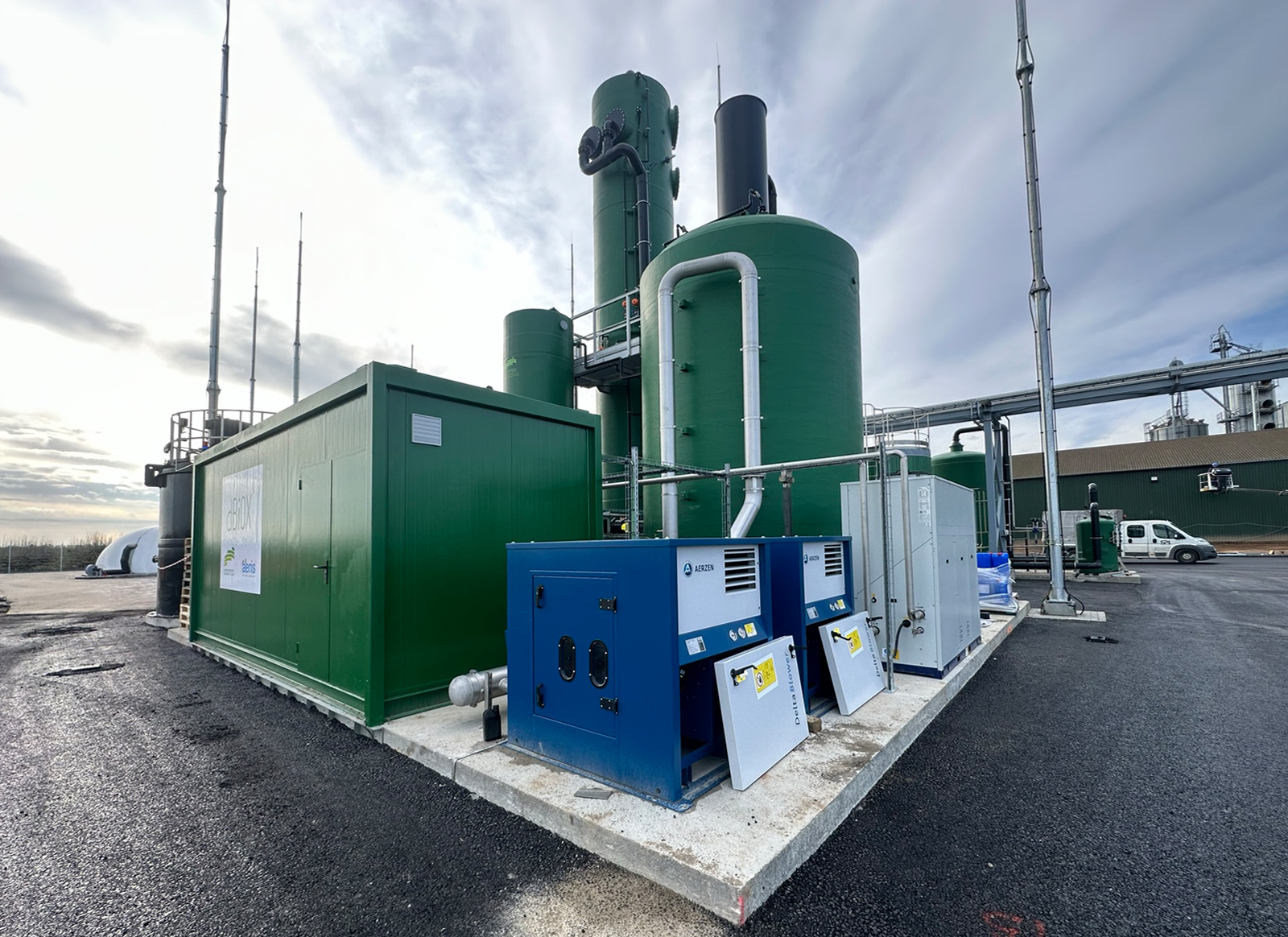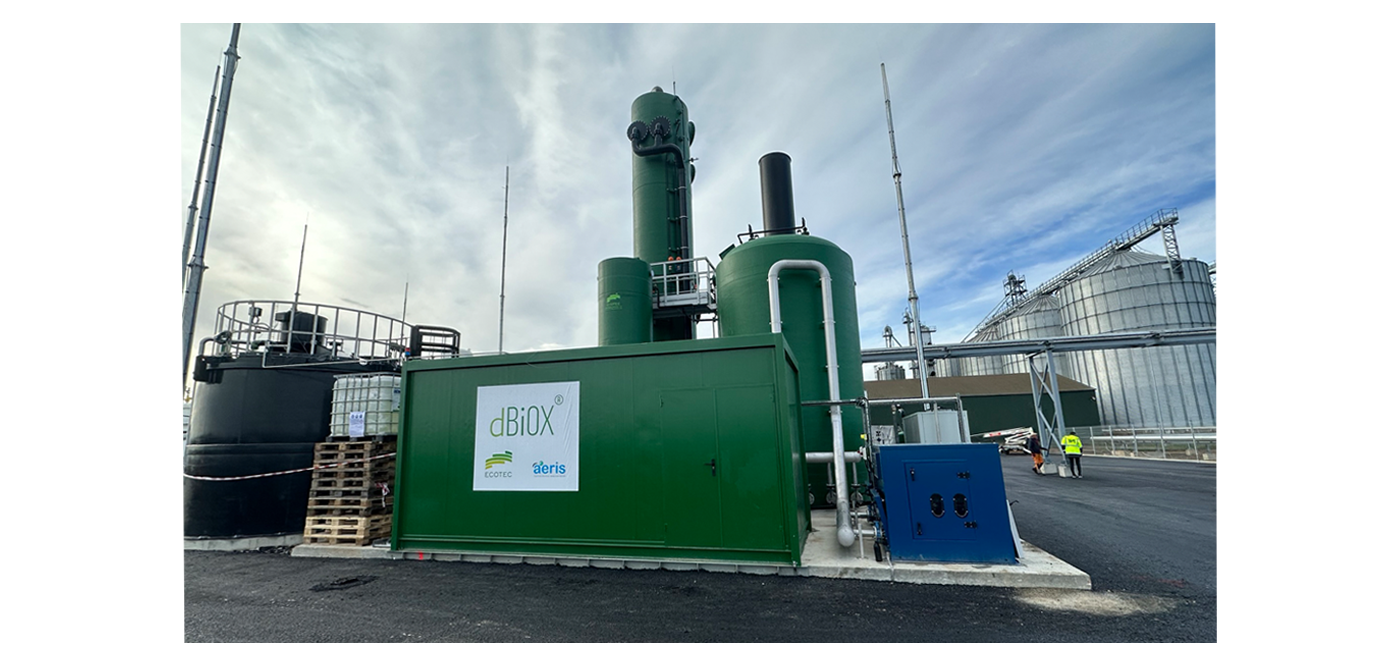This case study explores the implementation of a dBiox® Bioscrubber system for biogas upgrading in Pasvalys, Lituania. The biogas, generated from the anaerobic digestion of organic waste, is an environmentally friendly energy source. However, it often contains high concentrations of hydrogen sulfide (H2S), a corrosive and toxic compound that must be removed before the biogas can be utilized efficiently.
The biological desulfurization dBiox® Bioscrubber system offers a sustainable and cost-effective solution for H2S removal. According to the requirements for biogas upgrading process, our bioscrubber system does not add any oxygen the biogas stream.

Below the operation, and performances figures of the plant:
|
Pollutants: |
H2S |
|
Flow rate: |
2.500 m3/h |
|
Delivered equipments: |
1 Scrubber |
|
1 Bioreactor |
|
|
1 Settler |
|
|
1 control Booth |
Performance:
|
Pollutant |
Inlet |
Efficiency |
Outlet |
|
H2S |
4.500 ppmv |
98% |
< 100 ppmv |
This case study demonstrates that dBiox® Bioscrubber system can effectively remove H2S from biogas, improving its quality and mitigating environmental and operational challenges. The system provides a sustainable and cost-effective solution for biogas upgrading, enabling its utilization in various energy applications. This case study serves as a valuable reference for similar biogas plants seeking to implement a biological desulfurization system to enhance their operations and reduce environmental impacts.

